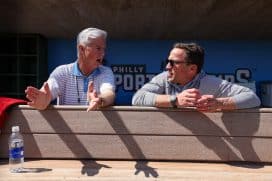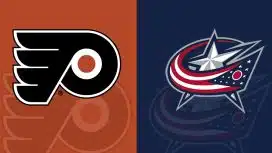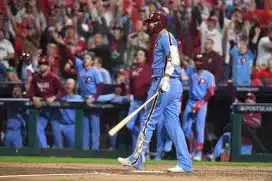Flyers
NHL’s Efforts for Return, Peace Should Be Rewarded with Completed Season
By Kevin Durso, Sports Talk Philly editor
The results of Friday night’s vote of the NHL Board of Governors and the NHL Players Association was the culmination of a journey to return to the ice. Through a four-month pause due to the COVID-19 pandemic, there were often more questions than answers about any plans to make a return.
Let’s be frank from the very beginning: the biggest uncertainty with this plan is COVID-19. The next two weeks — when Phase 3 begins and teams start holding full training camps — will be the most critical period. There will be more bodies on the ice than ever before and if the NHL wants to resume play and complete the playoffs, it will take a responsibility from players and staff to ensure that they are not putting themselves at risk outside of the training facilities, especially while the teams are still not subject to bubble life.
Getting into the bubble could be the ticket to successfully completing this plan.
With that in mind, it would be a just reward if the NHL were able to complete the season in the middle of a pandemic. It would be fitting for their efforts to work collaboratively to not only create a plan for returning, but also to establish labor peace for an extended period, if the Stanley Cup were awarded in late September or early October, as the plan indicates.
The NHL followed suit with the rest of the major sports leagues in the United States on March 12 and shut down game play for the foreseeable future as the first wave of COVID-19 started to hit the rest of the country. For several months, each league has constructed their own way back.
The NBA similarly proposed a bubble plan, but focused on a specific property where players could be more isolated — Orlando, FL and specifically Walt Disney World. As it became closer to the time of execution for that plan, Florida was going through a second, and quite possibly more severe, wave of COVID-19 cases.
The NHL’s bubble plan was very fluid from the start. After weeks of deliberation, they chose 10 finalist cities as possibilities to host the Stanley Cup Playoffs in a return. For several weeks after, there was talk about one US city and one Canadian city, assuming Canada was going to allow for athletes to cross the border with exemption from a mandatory 14-day quarantine period.
As those weeks passed, it was becoming clear that the US was much farther behind the rest of the world in combating COVID-19. Cases were on the rise again, and in states and cities that were part of the hub city discussion just weeks earlier. The NHL pivoted the plans and set their sights on Canada, where COVID-19 is much more under control, and named Toronto and Edmonton hub cities.
Major League Baseball had a proposed plan that put teams in their home ballparks without fans and limited their travel — the NL East and AL East divisions are playing each other as opposed to separating NL and AL — but also got locked into a labor debate of their own. For a while, it was a question if peace there would prevail to even allow a season to take place.
In the MLB, another problem has emerged lately. Testing has become an issue. Players are waiting several days for test results to come in, and that is forcing some players to sit out workouts to protect their other teammates and staff. The NHL has said from the beginning that they will do constant testing — daily once reaching Phase 4 — and deliver the results by the next morning so that it becomes easier to trace any instance of the virus.
The NHL has been known as the league that struggles with labor peace. Gary Bettman took over as commissioner in 1993 and there were lockouts in 1994, 2004-05 and 2012 that twice shortened the season and once cancelled it altogether. There’s a trend there. In Bettman’s tenure, there has never been a period of labor peace that lasted longer than a decade. When the newly-extended CBA expires following the 2025-26 season, it will mark nearly 13 years of labor peace.
For all of these efforts, for all of the deliberation and for all of the careful, well thought-out decisions that have been made, the NHL should be rewarded by getting across the finish line. It’s not something that they control, but given the steps they have taken, they might just have the best shot of any major sports league of actually seeing their season come to a conclusion.












































